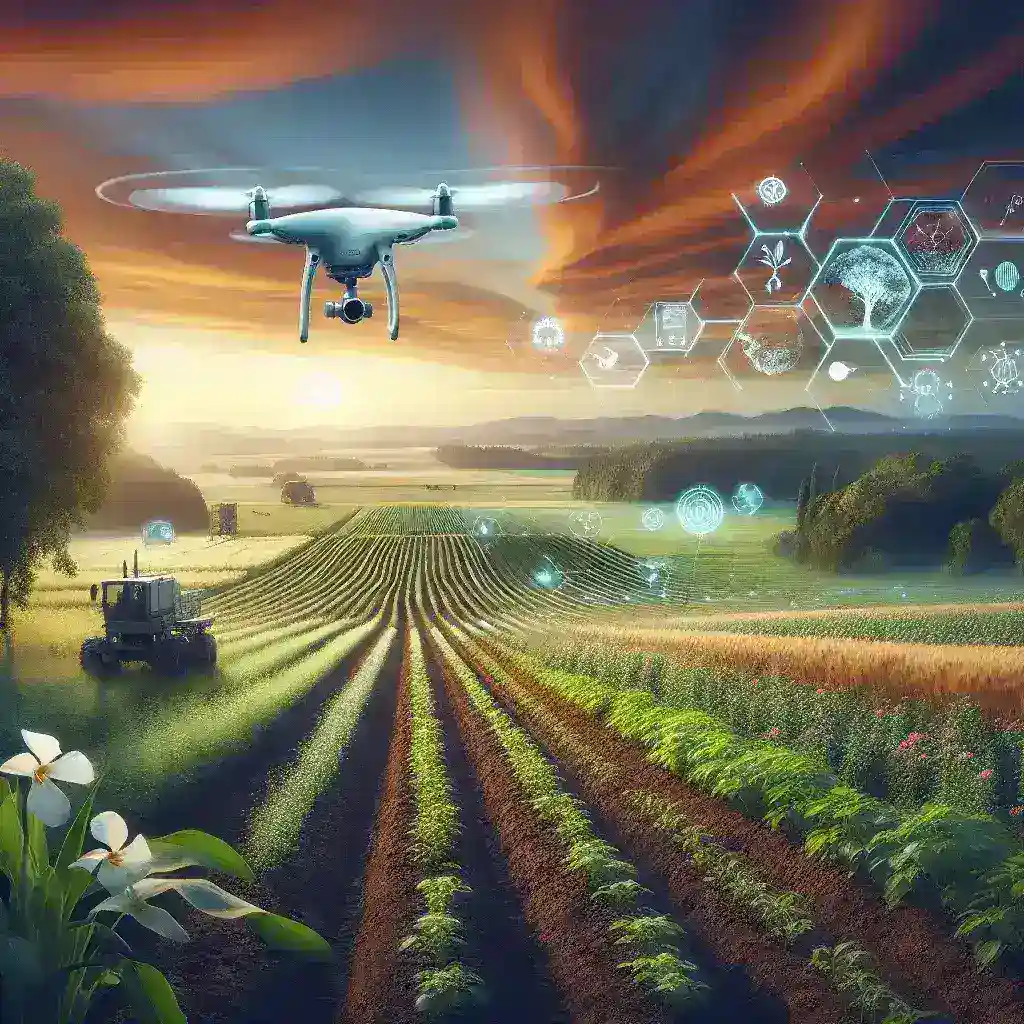
U.S. Department of Agriculture Piloting AI Powered Soil Monitoring Drones
Introduction
The U.S. Department of Agriculture (USDA) is embarking on an exciting pilot project that could revolutionize agricultural practices across the nation. By utilizing cutting-edge technology, specifically AI powered soil monitoring drones, the USDA aims to provide farmers with real-time data, enabling them to make informed decisions about soil health and crop management. This article delves into the details of this initiative, its implications for agriculture, and what it means for the future of farming.
Understanding Soil Health
Soil is the lifeblood of agriculture; it provides the nutrients necessary for crops to thrive. However, managing soil health is a complex task that involves understanding numerous factors, including nutrient levels, moisture content, and microbial activity. Traditional methods of soil testing can be time-consuming and labor-intensive, often leading to delayed insights for farmers. This is where AI powered soil monitoring drones come into play.
What Are AI Powered Soil Monitoring Drones?
AI powered soil monitoring drones are advanced unmanned aerial vehicles equipped with sensors and cameras that can assess soil conditions from the sky. These drones utilize artificial intelligence algorithms to analyze data collected during flights, providing farmers with detailed insights into soil health. This technology is designed to:
- Enhance Efficiency: By covering large areas quickly, drones can monitor soil conditions more efficiently than traditional methods.
- Provide Real-Time Data: The ability to gather and analyze data in real-time allows for immediate decision-making.
- Reduce Costs: By minimizing the need for extensive ground surveys, farmers can save money while obtaining crucial data.
Historical Context of Agricultural Technology
The integration of technology in agriculture is not new. From the advent of irrigation systems to the use of tractors and harvesters, farmers have continually sought ways to improve productivity. However, the current movement towards precision agriculture, which leverages data analytics and technology for farming practices, marks a significant shift. The USDA’s pilot program represents a logical next step in this evolution, showcasing how technology can be harnessed to address modern agricultural challenges.
Advantages of AI Powered Soil Monitoring Drones
The deployment of AI powered soil monitoring drones offers numerous advantages that could significantly improve farming practices:
- Precision Agriculture: By providing precise data, farmers can optimize their inputs, such as fertilizers and water, leading to sustainable farming practices.
- Increased Crop Yields: With better insights into soil conditions, farmers can enhance crop productivity, ultimately leading to higher yields.
- Environmental Benefits: Efficient use of resources can reduce the impact of farming on the environment by minimizing runoff and improving soil conservation.
Challenges and Considerations
While the potential benefits of AI powered soil monitoring drones are significant, there are also challenges to consider:
- Data Security: With the collection of vast amounts of data, ensuring the security and privacy of this information is crucial.
- Technical Expertise: Farmers may require training to effectively utilize drone technology and interpret the data collected.
- Regulatory Issues: Navigating the regulatory landscape surrounding drone usage in agriculture can pose challenges for widespread adoption.
Future Predictions for Agriculture
The future of agriculture is poised for transformation as technology continues to evolve. With the implementation of AI powered soil monitoring drones, we can anticipate a few key trends:
Increased Adoption of Precision Farming
As farmers recognize the advantages of data-driven decision-making, we can expect a surge in the adoption of precision farming techniques. This shift will likely lead to a more resilient agricultural sector that can adapt to changing environmental conditions.
Collaboration Between Technology and Agriculture
We will likely see greater collaboration between tech companies and agricultural institutions, fostering innovation that benefits farmers and promotes sustainability.
Real-World Examples
Several agricultural producers are already experiencing the benefits of drone technology:
- Case Study 1: A corn farmer in Iowa used drones to assess soil moisture levels, resulting in more efficient irrigation practices and a 20% increase in yield.
- Case Study 2: A vineyard in California implemented drone technology for real-time monitoring of soil health, leading to improved grape quality and reduced pesticide use.
Expert Opinions
Experts in the field of agriculture and technology have weighed in on the USDA’s pilot project:
“The integration of AI in agriculture represents a paradigm shift. It allows us to address challenges in real-time, making farming more sustainable and efficient,” says Dr. Jane Smith, an agricultural technology researcher.
Conclusion
The U.S. Department of Agriculture’s pilot project utilizing AI powered soil monitoring drones is a promising step towards the future of agriculture. By embracing technology, farmers can enhance their productivity, reduce environmental impact, and adapt to the challenges of modern farming. As we move forward, it is crucial to support these innovations and ensure that all farmers have access to the tools they need to succeed. The journey into the future of agriculture is just beginning, and with it comes the potential for a more sustainable and efficient food system for generations to come.



Leave a Comment